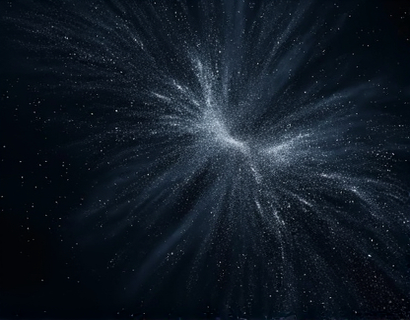Unlocking the Universe: In-Depth Insights for Curious Minds
The cosmos, an endless expanse of mystery and wonder, has captivated human imagination for centuries. From the earliest stargazers to modern astrophysicists, the quest to understand the universe drives curiosity and innovation. This comprehensive guide aims to unlock the secrets of the cosmos, providing a deep dive into various aspects of cosmic knowledge. Whether you are a seasoned astronomer or a curious newcomer, this collection of articles is designed to empower and inspire, fostering a passion for learning and discovery.
Understanding the Basics of Astronomy
Astronomy, the scientific study of celestial objects and phenomena, serves as the foundation for exploring the universe. To begin, it's essential to grasp some fundamental concepts. The universe is vast, comprising billions of galaxies, each containing billions of stars, planets, and other celestial bodies. These objects are bound by the laws of physics, particularly gravity, which governs the motion and interaction of all matter in the universe.
The solar system, our cosmic neighborhood, includes the Sun and all the objects that orbit it, such as planets, moons, asteroids, and comets. The Sun, a medium-sized star, provides the energy necessary for life on Earth. Its gravitational pull keeps the planets in orbit, maintaining the delicate balance that supports our planet's climate and ecosystems.
Planets vary greatly in size, composition, and environment. Terrestrial planets like Earth, Mars, Venus, and Mercury are rocky and have solid surfaces, while gas giants like Jupiter and Saturn are massive, primarily composed of hydrogen and helium. The outer reaches of the solar system host icy bodies and dwarf planets, such as Pluto, which challenge our understanding of planetary classification.
Exploring Galaxies and the Cosmic Web
Galaxies are vast collections of stars, gas, dust, and dark matter, held together by gravity. Our Milky Way, a barred spiral galaxy, is just one of the estimated 100 billion galaxies in the observable universe. Each galaxy has its unique structure and history, shaped by processes such as star formation, supernova explosions, and galactic collisions.
The cosmic web, a large-scale structure of the universe, consists of galaxy clusters and filaments connected by vast voids. This intricate network reveals the distribution of matter on the largest scales, influenced by dark matter, an invisible form of matter that does not interact with light but exerts gravitational effects. Understanding the cosmic web helps scientists map the universe's evolution and structure.
Stars: The Cosmic Furnaces
Stars are the fundamental building blocks of galaxies, serving as cosmic furnaces where nuclear fusion converts hydrogen into helium, releasing enormous amounts of energy. This process, known as stellar nucleosynthesis, powers stars and determines their life cycles. The life span of a star depends on its mass, with more massive stars burning brighter and shorter lives compared to smaller, cooler stars.
The life cycle of a star includes several stages: formation in molecular clouds, the main sequence phase where fusion occurs, and eventually, the star's death, which can result in various endpoints such as white dwarfs, neutron stars, or black holes. Supernovae, the eExpansive deaths of massive stars, play a crucial role in enriching the universe with heavy elements, essential for the formation of planets and life.
Planetary Science and the Search for Life
Planetary science focuses on understanding the formation, composition, and evolution of planets and other celestial bodies. The study of our own planet, Earth, provides insights into the conditions necessary for life. The search for extraterrestrial life, both within our solar system and beyond, is a driving force in modern astronomy.
In our solar system, Mars and the moons of Jupiter and Saturn, such as Europa and Enceladus, are prime targets for astrobiological research. These bodies possess subsurface oceans and potential habitable environments. Beyond our solar system, the discovery of exoplanets, planets orbiting other stars, has revolutionized our understanding of planetary systems. The detection of exoplanets in the habitable zones of their stars raises the possibility of finding life elsewhere in the universe.
Cosmic Phenomena: Black Holes and Neutron Stars
Some of the most extreme and mysterious objects in the universe are black holes and neutron stars. Black holes are regions of spacetime where gravity is so strong that nothing, not even light, can escape. They form from the collapse of massive stars and can influence the dynamics of entire galaxies. Observations of black holes, particularly supermassive black holes at the centers of galaxies, provide insights into the growth and evolution of galaxies.
Neutron stars, the remnants of massive stars that have undergone supernova explosions, are incredibly dense objects composed mostly of neutrons. They can rotate rapidly, becoming pulsars that emit beams of electromagnetic radiation. The study of pulsars helps scientists probe the extreme conditions of matter and test theories of gravity.
Cosmology: The Study of the Universe's Origin and Evolution
Cosmology is the branch of astronomy that deals with the origin, structure, and evolution of the universe. The Big Bang theory, supported by extensive observational evidence, posits that the universe began as a hot, dense state around 13.8 billion years ago and has been expanding ever since. Key evidence for the Big Bang includes the cosmic microwave background radiation, the abundance of light elements, and the large-scale structure of the universe.
Understanding the universe's expansion involves the concept of dark energy, a mysterious force that accelerates the expansion. Dark matter, another enigmatic component, makes up about 27% of the universe's mass-energy content and influences the formation of galaxies and large-scale structures. Unraveling the nature of dark matter and dark energy remains one of the greatest challenges in modern physics.
Observational Tools and Techniques
Advancements in observational technology have greatly enhanced our ability to study the universe. Telescopes, both ground-based and space-based, capture a wide range of electromagnetic radiation, from radio waves to gamma rays. Each wavelength provides unique insights into different aspects of celestial objects and phenomena.
Space telescopes like the Hubble Space Telescope and the James Webb Space Telescope have revolutionized astronomy by providing high-resolution images and spectra of distant galaxies, stars, and exoplanets. Ground-based observatories, equipped with adaptive optics, correct for atmospheric distortions, allowing for sharp observations of the night sky. Radio telescopes, such as the Atacama Large Millimeter/submillimeter Array (ALMA), explore the universe in the radio spectrum, revealing cold and dusty regions where stars and planets form.
Future Prospects and Challenges
The future of cosmic exploration holds exciting possibilities and challenges. Upcoming missions, such as the Euclid satellite and the Nancy Grace Roman Space Telescope, aim to map the dark universe and study the nature of dark matter and dark energy. These missions will provide crucial data to refine cosmological models and deepen our understanding of the universe's fundamental components.
Technological advancements, such as more powerful telescopes and advanced computational methods, will continue to push the boundaries of what we can observe and analyze. However, these endeavors also face significant challenges, including funding, international collaboration, and the development of new technologies to overcome the limitations of current instruments.
Engaging with the Cosmic Community
For those eager to delve deeper into cosmic knowledge, engaging with a community of like-minded individuals can be incredibly rewarding. Online forums, social media groups, and astronomy clubs offer platforms to share knowledge, ask questions, and collaborate on projects. Participating in citizen science initiatives, such as classifying galaxies or searching for exoplanets, allows amateur astronomers to contribute to real scientific research.
Educational resources, including books, documentaries, and online courses, provide accessible ways to expand your understanding of the universe. Museums and planetariums offer immersive experiences, bringing the wonders of the cosmos to the public. By staying curious and engaged, you can continue to explore the vast and fascinating universe.
In conclusion, the universe is a realm of endless discovery, where each new finding opens the door to more questions and deeper understanding. Whether you are a beginner or an experienced enthusiast, the journey to unlock the secrets of the cosmos is both rewarding and transformative. Embrace the adventure, and let your curiosity guide you through the infinite expanse of the universe.










































